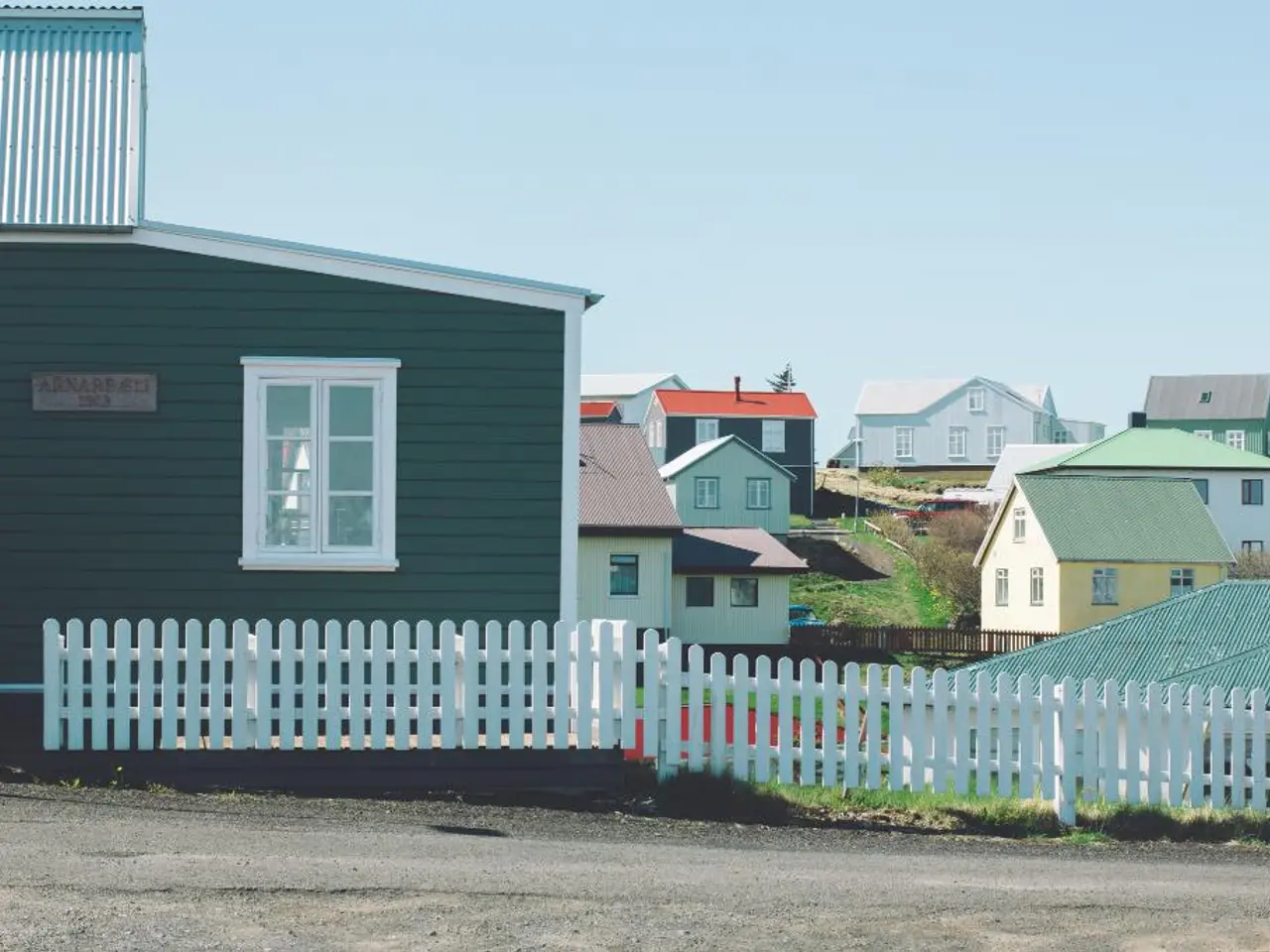House owners in the Central Valley are witnessing a decrease in property values alongside the land.
In California's San Joaquin Valley, a region known for its farming industry, a concerning issue has arisen: groundwater depletion leading to land subsidence, which in turn is causing a measurable decrease in home prices.
According to a study published in the journal Land Economics, homes in large portions of the Central Valley have been sinking due to excess groundwater pumping. This sinking, or land subsidence, has reduced residential property values by 2% to 6%, equating to losses of about $6,700 to $16,200 per home, totaling roughly $1.87 billion across eight counties (San Joaquin, Stanislaus, Merced, Madera, Fresno, Kings, Tulare, and Kern) between 2015 and 2021.
The cause of this subsidence is the farmers pumping groundwater faster than the natural replenishment rates, causing the underground clay and silt layers to compact and the land surface to sink gradually, often by as much as 1 inch per year in some areas. This subsidence leads to structural damages such as cracked foundations and wells going dry, which lower homeowners’ equity and raise insurance costs.
Amanda Fencl, climate science director for the Union of Concerned Scientists, stated that the link between subsidence and home values could lead to a "rallying cry" from people in the Valley who feel it's unfair that their ability to maintain and sell homes is affected by groundwater overuse.
The study, conducted by researchers at UC Riverside, established causation by comparing pairs of similar homes, each of which sold twice during the six-year period, one in an area with subsidence and one not. This method allowed the researchers to control for home similarities and sales timing, thereby distinguishing the impact of land sinking from other possible local price drivers.
Sen. Melissa Hurtado (D-Bakersfield) noted that the value of agricultural land is declining in parts of the valley and believes the way the groundwater law is targeting certain areas is negatively affecting property values. Hurtado also mentioned that subsidence has caused damage to her parents' home in Sanger, including foundation issues and cracks on the tile and walls.
To combat this issue, California is prioritizing projects to capture more stormwater to help replenish groundwater and slow land subsidence. The state is also working towards plans to limit pumping and address overdraft by 2040, with a focus on addressing land subsidence. Under California’s groundwater law, local agencies are required to submit groundwater sustainability plans to the state by 2020, and these plans must address the issue of overdraft and subsidence.
The study's findings underscore the substantial economic burden that groundwater overuse driven land subsidence imposes on homeowners in California’s Central Valley. As efforts continue to address this issue, it is crucial to consider the impact on home values and the broader community.
[1] https://advances.sciencemag.org/content/6/44/eaax6327 [2] https://www.latimes.com/california/story/2021-04-13/groundwater-overuse-is-causing-land-to-sink-and-home-prices-to-fall-in-californias-central-valley [3] https://www.npr.org/2021/04/13/986711192/groundwater-overuse-is-causing-land-to-sink-and-home-prices-to-fall-in-californias-central-valley [4] https://www.ucr.edu/news/headlines/groundwater_depletion_affects_home_values_in_californias_central_valley [5] https://www.sciencedirect.com/science/article/pii/S000634E321001636
Read also:
- Overweight women undergoing IVF have a 47% higher chance of conceiving naturally post-weight loss
- Bonsai Trees from Evergreen Species: Exploring Growth Characteristics & Distinct Qualities
- What temperatures may make walking your canine companion uncomfortable?
- Alcohol consumption and the connection to esophageal cancer: An exploration of links and potential hazards






